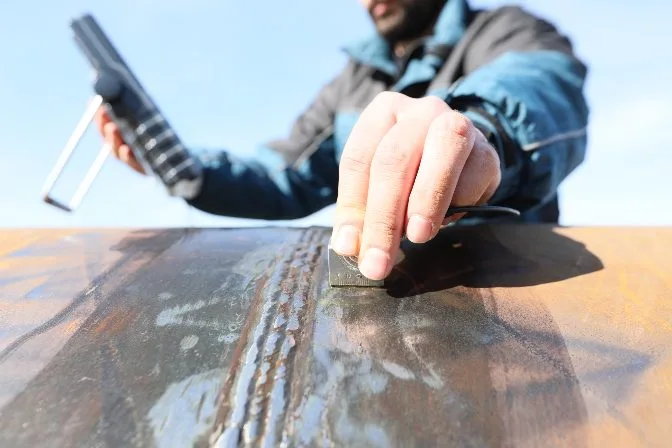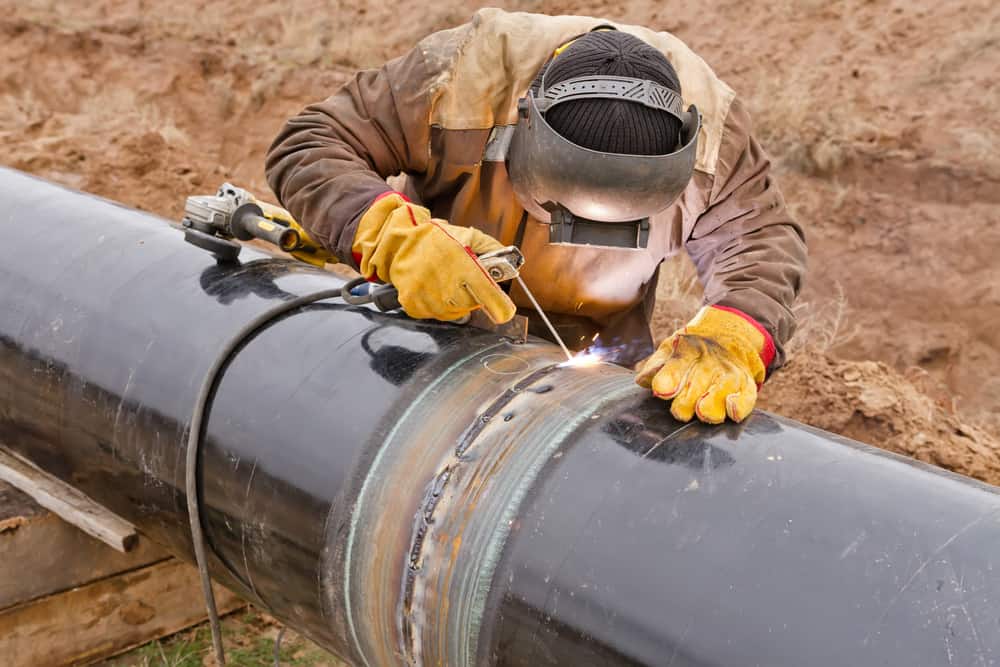How Welding Inspection Milwaukee Improves Architectural Integrity
A Comprehensive List for Effective Welding Evaluation Practices
In the realm of welding, the stability of frameworks is paramount, requiring a strenuous method to assessment methods. Exploring these vital parts can generate understandings that exceptionally effect welding operations.
Understanding Welding Requirements
Welding requirements play a crucial duty in making certain the top quality and safety of bonded structures and components. These criteria establish the requirements for materials, treatments, testing, and assessment, thus supplying a structure for consistent quality control in welding processes. Various companies, consisting of the American Welding Culture (AWS), the International Organization for Standardization (ISO), and the American Society of Mechanical Designers (ASME), have created thorough criteria that govern various elements of welding.
Understanding welding requirements is essential for experts in the field, as adherence to these standards decreases the threat of flaws and failures in bonded joints. These standards cover specific requirements for weld high quality, including acceptable tolerances, the type of welding methods to be utilized, and the credentials needed for welders and inspectors.

Pre-Welding Evaluation Steps
Before any welding process begins, a comprehensive pre-welding examination is vital to determine potential problems that may compromise the quality of the weld. This first step offers as a vital foundation for guaranteeing compliance with relevant welding codes and criteria.
The very first step in the pre-welding inspection is to validate the products being utilized. This consists of monitoring for the right kind and grade of metals as defined in the job documents. Next, it is critical to check the fit-up of the parts to ensure correct alignment and joint setup. Misalignment can result in poor infiltration and structural weak points.
In addition, assessing the sanitation of the surfaces is important; impurities such as oil, paint, or rust can detrimentally impact the top quality of the weld. Following this, a thorough evaluation of the welding tools ought to be performed, making sure that it is calibrated and in great working problem.
Last but not least, assessing the certifications of the welding employees is critical. Welders have to possess the required qualifications and experience to perform the certain welds required for the project. By sticking to these pre-welding evaluation actions, the probability of problems and failures in the last weld can be dramatically reduced.

In-Process Assessment Methods
In-process assessment techniques play a vital role in guaranteeing the honesty and top quality of welds as they are being performed. These strategies permit assessors to identify flaws or discrepancies from requirements in actual time, thus avoiding costly fixings and ensuring adherence to layout demands.
One trick method includes aesthetic evaluation, where inspectors assess the weld bead for harmony, infiltration, and correct profile. This can be enhanced by the use gauges to determine weld measurements, ensuring compliance with fixed resistances. Additionally, the implementation of non-destructive testing (NDT) techniques, such as ultrasonic testing or magnetic particle testing, throughout the welding process can expose subsurface imperfections that might not be visible externally.
An additional vital aspect is keeping track of welding parameters, including voltage, amperage, and travel speed. Uniformity in these specifications is crucial for attaining ideal weld high quality. Documenting these criteria during the welding operation provides a deducible record for future reference.
Training personnel in correct inspection techniques and making use of ideal tools enhances the efficiency of in-process inspections. By incorporating these techniques, organizations can attain greater high quality welds, minimize rework, and ultimately make certain the safety and integrity of welded frameworks.
Post-Welding Quality Checks
Following the completion of welding procedures, post-welding high quality checks are critical to verify that the welds meet all defined requirements and demands. These checks are necessary for ensuring the honesty and durability of the bonded joints. The assessment process normally starts with a visual exam, evaluating for surface problems such as cracks, porosity, or insufficient fusion.
Subsequently, non-destructive screening (NDT) approaches, such as ultrasonic screening, radiographic testing, or magnetic fragment screening, may be used to spot internal problems that are not visible to the naked eye. Each method has its distinct advantages and is picked based on the weld's location, product type, and the nature of the application.
In addition, confirming dimensional accuracy is a crucial facet of post-welding top quality checks. This involves gauging the weld's size, account, and placement to make sure compliance with design requirements. Evaluating the mechanical homes of the weld, including tensile toughness and ductility, can provide additional assurance of performance under functional conditions. Generally, complete post-welding inspections are crucial for maintaining adherence, safety and security, and efficiency to governing and industry standards.
Paperwork and Coverage
Just how can efficient documentation and reporting boost the welding examination procedure? Precise documents and thorough coverage are crucial components that ensure the integrity and quality of welding procedures. Welding Inspection Milwaukee. They act as an official record of examination findings, assisting in responsibility and traceability in conformity with industry criteria
A well-structured coverage system makes it possible for assessors to clearly communicate any kind of discrepancies, non-conformances, or areas requiring improvement. This openness promotes a setting of constant improvement, as stakeholders can conveniently assess past performance and apply restorative actions.
Furthermore, effective paperwork consists of detailed records such as welding procedure specs (WPS), welder qualifications, and inspection checklists. These elements supply a structure for assessing weld quality and adherence to developed standards. find out In case of disagreements or top quality issues, detailed documents serves as a reputable referral, minimizing uncertainty and safeguarding all parties entailed.
Last but not least, keeping organized documents helps in training and accrediting workers, ensuring that market best techniques are maintained. Eventually, careful documents and reporting not just improve the welding assessment process yet additionally add to the overall safety and dependability of welded structures.

Verdict
In final thought, a detailed list for effective welding examination methods is crucial for making certain top quality and safety in bonded frameworks. Adherence to established welding standards, thorough pre-welding examinations, extensive in-process evaluations, and extensive post-welding top quality checks collectively contribute to the stability of bonded joints.
Welding requirements play an important duty in guaranteeing the top quality and security of bonded frameworks and parts. Various organizations, including the American Welding Society (AWS), the International Organization for Standardization (ISO), and the American Culture of Mechanical Designers (ASME), have established comprehensive requirements that control different elements of welding.
Complying with the completion of welding operations, post-welding quality checks are crucial to validate that the welds satisfy all specified requirements and requirements - Welding Inspection Milwaukee.In final thought, an i thought about this extensive checklist see this page for efficient welding evaluation techniques is essential for making certain high quality and security in welded frameworks. Adherence to developed welding criteria, thorough pre-welding inspections, rigorous in-process evaluations, and extensive post-welding high quality checks jointly contribute to the integrity of bonded joints